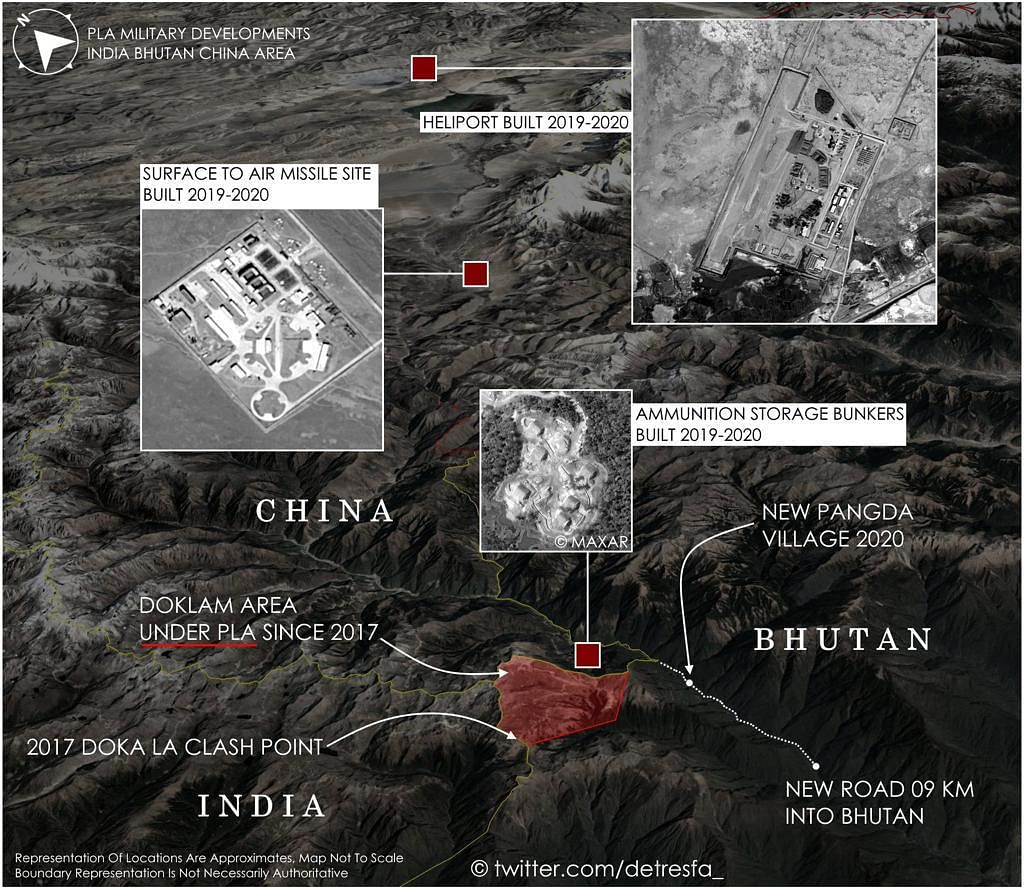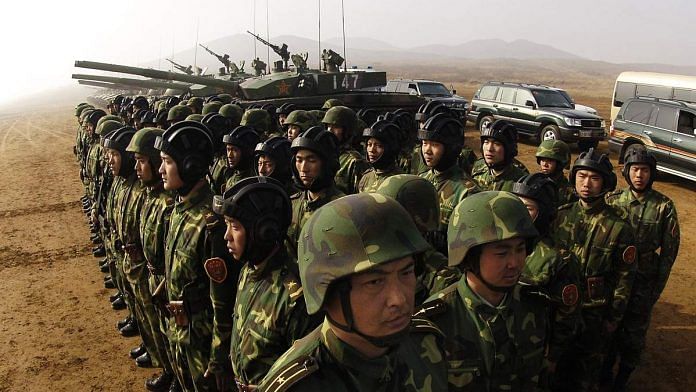New Delhi: A Chinese journalist has sparked controversy after tweeting, and then deleting, the map of a new village of the country. Satellite imagery analysts claimed the village was two kilometres inside Bhutanese territory and near the Doklam Plateau, but Bhutan has contested the analysis, asserting that there is no Chinese encroachment on its territory.
“There is no Chinese village on Bhutanese territory,” Major General V. Namgyel, Bhutan’s envoy to India, told ThePrint. Asked if the village was on Chinese land, he repeated that all he can say is that there are no Chinese villages on Bhutanese land.
The row broke out after Shen Shiwei, a senior producer with the Chinese state-owned CGTN network, tweeted three images of a village along with a map showing its location.
“Now, we have permanent residents living in the newly established Pangda village. It’s along the valley, 35 km south to Yadong country. Here is a map to show the location,” he had tweeted. He subsequently deleted his tweet.
The village is alleged to be on the eastern periphery of the Doklam plateau, where, in 2017, India and China were involved in a stand-off. New satellite imagery put out by the popular Twitter handle @detresfa_ also claims a new 9 km road has come up next to the village into the Doklam Plateau.

Village in Bhutan: Expert
Nathan Ruser, a satellite imagery expert with the think tank Australian Strategic Policy Institute (ASPI), tweeted that the village was located “within over 2 kilometres into Bhutan, according to their official maps and claims (27.307, 89.007)”.
“The pink outline shows areas of fallen trees, very possibly where the river has flooded and knocked them over,” he tweeted. “You can even see tree trunks in blue. Now the other side of those floods would be the village”.
“To combat this Chinese engineers have constructed a small retaining wall, I assume designed to keep any flood water out of the village,” he added. “I’m not sure I’d trust it when the only way in and out is a road that would get flooded before the village.”
To combat this Chinese engineers have constructed a small retaining wall, I assume designed to keep any flood water out of the village. I'm not sure I'd trust it when the only way in and out is a road that would get flooded before the village. pic.twitter.com/Nj14I81mAW
— Nathan Ruser (@Nrg8000) November 22, 2020
Senior Bhutanese journalist Tenzing Lamsang, however, tweeted that the satellite imagery was based on Google, which he added may have a different perception of border areas and claim lines.
“For the Google & satellite map experts please do note that Bhutan is well aware of Chinese road encroachments and has issued numerous diplomatic demarches over the years, including in 2017 during the standoff. We have also discussed it openly in past National Assembly sessions,” he tweeted.
Thread
Have seen and read reports of the Chinese allegedly building a village 2 km inside Bhutan in Doklam area.
However, as per reliable sources in Bhutan there is no ‘Chinese village’ constructed inside Bhutan.
— Tenzing Lamsang (@TenzingLamsang) November 20, 2020
The village comes with a road and housing structures. If the claims of the analyst prove true, this could be construed as a Chinese attempt at ‘salami slicing’, a strategy of slowly taking over land.
The importance of Doklam
India and Bhutan consider the Doklam plateau as an integral part of Bhutan. China, however, sees it as an extension of its Chumbi Valley, the wedge of land that lies between Sikkim and Bhutan.
The plateau is about 89 sq km in area, with a width of less than 10 km.
ThePrint had reported last October that China and Bhutan are in talks to strike a deal on the Doklam boundary dispute. The Chinese holding line in the region is likely to become the working boundary between the two.
Also read: Drones won the war for Azerbaijan. India must spend military modernisation money wisely




If it’s Chinese village in Bhutan then why would Bhutanese leave in their land?
I’m sure China wants to know further about India so they are using Bhutan